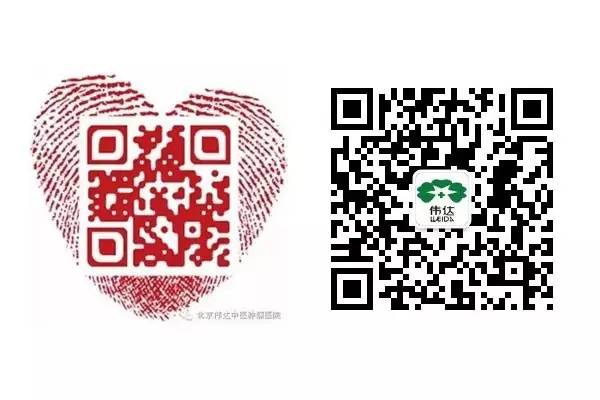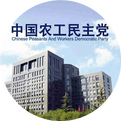
‘Jin Kui Yao Lue’ Treatment Method Characteristics
—-Excerpt from ‘Zheng Weida Medical Collection’
‘Jin Kui Yao Lue’ is the earliest existing specialized book in China that studies miscellaneous diseases. Over the course of more than 1,700 years, its differentiation of diseases and syndromes, treatment methods, and prescriptions have always held significant guiding and practical value in clinical practice. Many characteristics of TCM treatment methods are fully reflected in this book.
1.Preventing Disease Before It Occurs
This refers to early prevention of disease and early treatment of existing conditions. For example, in the section on ‘Diseases of the Zang-Fu Organs and Meridians’, it states: “If a person can cultivate caution and not allow evil winds to disturb the meridians: if the meridians are in harmony and have not transmitted to the Zang-Fu organs, then treat it; if the five Zang organs are unobstructed, the person will be peaceful and harmonious.” The first section states, “To prevent disease before it occurs, if one sees liver disease, they should know that the liver transmits to the spleen, and should first strengthen the spleen.” The main spirit of preventing disease before it occurs is reflected in the following three aspects:
(1) Preventing the Occurrence of Disease The original text states: “If a person can cultivate caution and not allow evil winds to disturb the meridians… and avoid violating the laws of nature, ensure that rooms are not depleted, and regulate the temperature and flavors of food, then there will be no way for disease to enter the pores.” This emphasizes nurturing the righteous qi internally, being cautious of wind and cold externally, and preventing unexpected injuries, which are important measures for preventing disease and embody the main spirit of ‘preventing disease before it occurs’.
(2) Early Treatment of Existing Conditions This section states: “If the meridians are in harmony and have not transmitted to the Zang-Fu organs, then treat it; if the limbs feel heavy and stagnant, then use guiding exercises, expectoration, acupuncture, and topical applications, and do not allow the nine orifices to become blocked.” This illustrates the importance and methods of early treatment.
(3) Preventing Transformation of Existing Diseases This section states: “To prevent disease before it occurs, if one sees liver disease, they should know that the liver transmits to the spleen, and should first strengthen the spleen.” Here, ‘preventing disease before it occurs’ refers to treating the Zang-Fu organs that are not yet diseased, with the aim of cutting off the transmission pathways and preventing the affected Zang organs from impacting others. For example, if the liver is diseased, it is most likely to transmit to the spleen; thus, while treating the liver, one must also pay attention to tonifying the spleen to prevent liver disease from affecting the spleen. Otherwise, “if one does not tonify the spleen and only treats the liver,” the result will be that the liver disease does not resolve, and spleen disease arises, leading to disease progression. The concept of ‘preventing disease before it occurs’ is an important treatment thought for preventing disease transmission and progression.
2.Emphasis on the Righteous Qi of the Body
The body’s ability to resist disease relies entirely on the righteous qi. When the righteous qi is deficient, it becomes difficult for medications to exert their effects. Therefore, the entire book pays attention to tonifying the spleen and stomach for chronic debilitating diseases, considering this the fundamental method for treating internal injuries. For treating the spleen, Huang Qi (Astragalus) is the main herb, as it can strengthen the spleen and benefit qi; thus, there are eight formulas using Huang Qi. In contrast, the ‘Shang Han Lun’ does not use Huang Qi in its formulas. For treating the kidneys, Fu Zi (Aconite) is the main herb, hence there are 18 formulas using prepared Fu Zi, while the Kidney Qi Pill appears five times. Additionally, many miscellaneous diseases also present with symptoms of blood deficiency, thus ‘Jin Kui’ uses formulas with Dang Gui (Angelica) 14 times, while ‘Shang Han Lun’ only four times, all in the Jue Yin section. ‘Shang Han Lun’ often uses raw Fu Zi to revive yang, while ‘Jin Kui’ frequently uses prepared Fu Zi to warm the kidneys and revive yang. However, it should be noted that while this book emphasizes righteous qi, it does not neglect the expulsion of evil to avoid damaging the righteous qi, reflecting the spirit of always being mindful of protecting the righteous qi.
3.Guiding According to the Situation
Guiding according to the situation means that depending on the location of the pathogenic factor, one should guide it out of the body to achieve the goal of curing the disease. For example, in the case of phlegm and fluid retention, if the fluid is on the surface, use Xiao Qing Long Tang (Minor Blue Dragon Decoction); if the fluid is below, use Wu Ling San (Five-Ingredient Powder with Poria) or Ze Xie Tang (Alisma Decoction). The section on ‘Vomiting and Diarrhea’ states: “If there is a large vomiting with pus and phlegm, do not treat the vomiting; the pus will resolve on its own.” “If the patient wants to vomit, do not induce it.” The section on ‘Jaundice’ states: “In cases of alcoholic jaundice, if there is heat in the heart and the patient wants to vomit, induce vomiting to cure it.” And, “If the whole body is hot and yellow, with abdominal heat, and the heat is internal, then purge it.” These all reflect the characteristic of guiding according to the situation.
4.Different Treatments for the Same Disease and Same Treatments for Different Diseases
Generally, similar diseases should be treated with similar methods, and different diseases should be treated with different methods, which is the general rule for treating diseases. However, in certain cases, different diseases can be treated with the same method, and similar diseases can be treated with different methods. This is known as different treatments for the same disease and same treatments for different diseases. This reflects the high flexibility of traditional Chinese medicine in differentiating syndromes and treating accordingly, which is one of the prominent features of Chinese medicine. ‘Jin Kui’ embodies this in many places. For example, the same disease may present different clinical patterns due to variations in body constitution, pathogenesis, and disease location, leading to different treatment methods. For instance, in the case of chest obstruction, symptoms may include chest tightness, qi stagnation in the chest, and reverse choking sensation. If the yang qi is not deficient, one can use Zhi Shi Xie Bai Gui Zhi Tang (Bitter Orange, Garlic, and Cinnamon Twig Decoction); if the yang qi is deficient, one should use Ren Shen Tang (Ginseng Decoction). Similarly, for water retention diseases, if there is swelling above the waist, one should induce sweating; if there is swelling below the waist, one should promote urination. For inducing sweating to resolve water retention, there is the example of Yue Bi Tang (Yue Bi Decoction) for wind-water; for promoting urination, there is Fang Ji Fu Ling Tang (Stephania and Poria Decoction) for skin-water. Various different diseases may have similar causes and mechanisms, and although the symptoms differ, the treatment methods may be the same. For example, the original text uses the Kidney Qi Pill for five conditions: (1) treating foot edema that ascends and causes numbness in the lower abdomen; (2) treating deficiency-labor back pain with tightness in the lower abdomen and difficulty urinating; (3) treating shortness of breath with weakness that requires urination; (4) treating male diabetes with excessive urination; (5) treating women with urinary retention. These five different conditions all belong to kidney yang deficiency and impaired qi transformation, thus can all use the Kidney Qi Pill. Similarly, Wu Ling San can be used for both phlegm and fluid retention in the lower jiao and for urinary retention and mild heat in the bladder due to ‘Shang Han Lun’ Tai Yang disease, as well as for edema requiring urination and diarrhea requiring opening of the waterways. Although these conditions have different symptoms, they all involve water evil as the underlying issue, thus can all use Wu Ling San.
5.Flexible Application of the Eight Methods
The eight methods of sweating, vomiting, purging, harmonizing, warming, clearing, reducing, and tonifying are fully utilized in ‘Jin Kui’, showing greater development than in ‘Shang Han Lun’. For example, in the method of sweating, aside from Xiao Qing Long Tang and Gui Zhi Tang, which are the same as in ‘Shang Han Lun’, for cold-dampness on the surface, use Ma Huang Jia Shu Tang (Ephedra and Atractylodes Decoction); for wind-dampness on the surface, use Ma Xing Yi Gan Tang (Ephedra, Apricot Kernel, Job’s Tears, and Licorice Decoction); for wind-water on the surface, use Yue Bi Tang. In cases of cough and asthma, if phlegm is light and heat is heavy, use Yue Bi Jia Ban Xia Tang (Yue Bi Decoction with Pinellia); if phlegm is heavy and heat is light, use Xiao Qing Long Jia Shi Gao Tang (Minor Blue Dragon Decoction with Gypsum). Additionally, for purging, to adapt to the complex situations of miscellaneous diseases involving phlegm, fluid retention, blood stasis, and cold-heat, there has been development based on ‘Shang Han Lun’. For purging blood stasis, there are Xie Yu Tang (Blood Stasis Purging Decoction) and Da Huang Shu Chong Wan (Rhubarb and Insect Pill), while for treating water and blood intermingling, there is Da Huang Gan Sui Tang (Rhubarb and Euphorbia Decoction). For resolving phlegm and fluid retention, there are Ji Jiao Li Huang Wan (Ginger and Licorice Pill), Hou Po Da Huang Tang (Magnolia Bark and Rhubarb Decoction), and Gan Sui Ban Xia Tang (Euphorbia and Pinellia Decoction). For cold purging, there is Xie Xin Tang (Purge the Heart Decoction), while for warming purging, there is Da Huang Fu Zi Tang (Rhubarb and Aconite Decoction). For treating damp-heat accumulation causing jaundice, there is Da Huang Nao Shi Tang (Rhubarb and Niter Decoction), and for treating stomach heat leading to vomiting, there is Da Huang Gan Cao Tang (Rhubarb and Licorice Decoction). The application of the eight methods in ‘Jin Kui’ is rich and varied.

This article is provided by Beijing Weida Traditional Chinese Medicine Tumor Hospital
Media Studio
Beijing Weida Traditional Chinese Medicine Tumor Hospital was established in 1994 and is a designated institution for national medical insurance and new rural cooperative medical care. It is headed by Academician Wu Mengchao as Honorary Director, with Professor Zheng Weida, Executive Director of the Chinese Association of Traditional Chinese Medicine and Chairman of the Social Medical Management Committee, serving as the Director.

